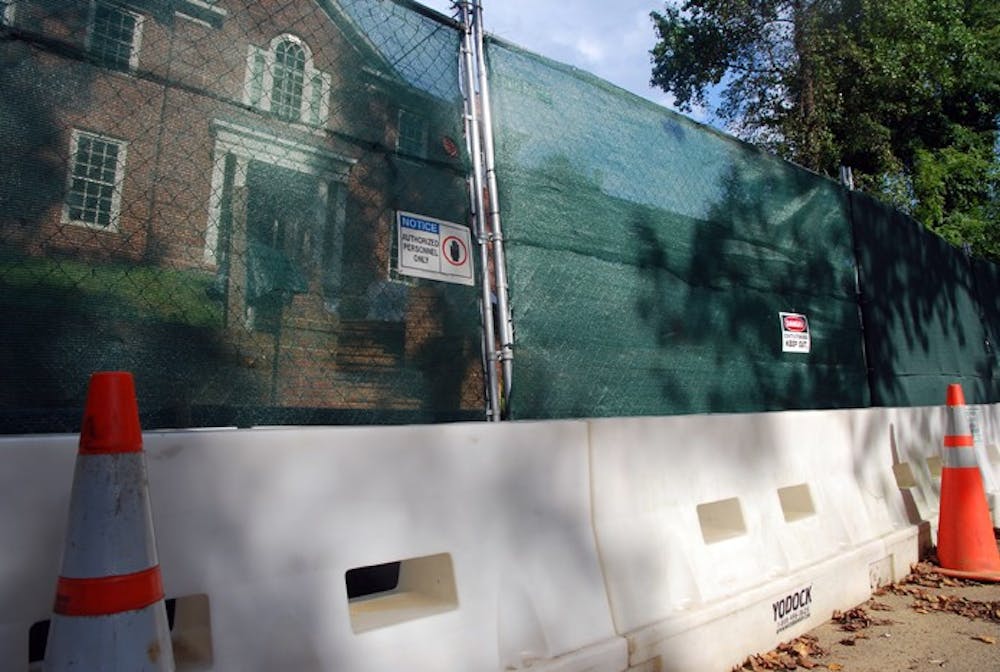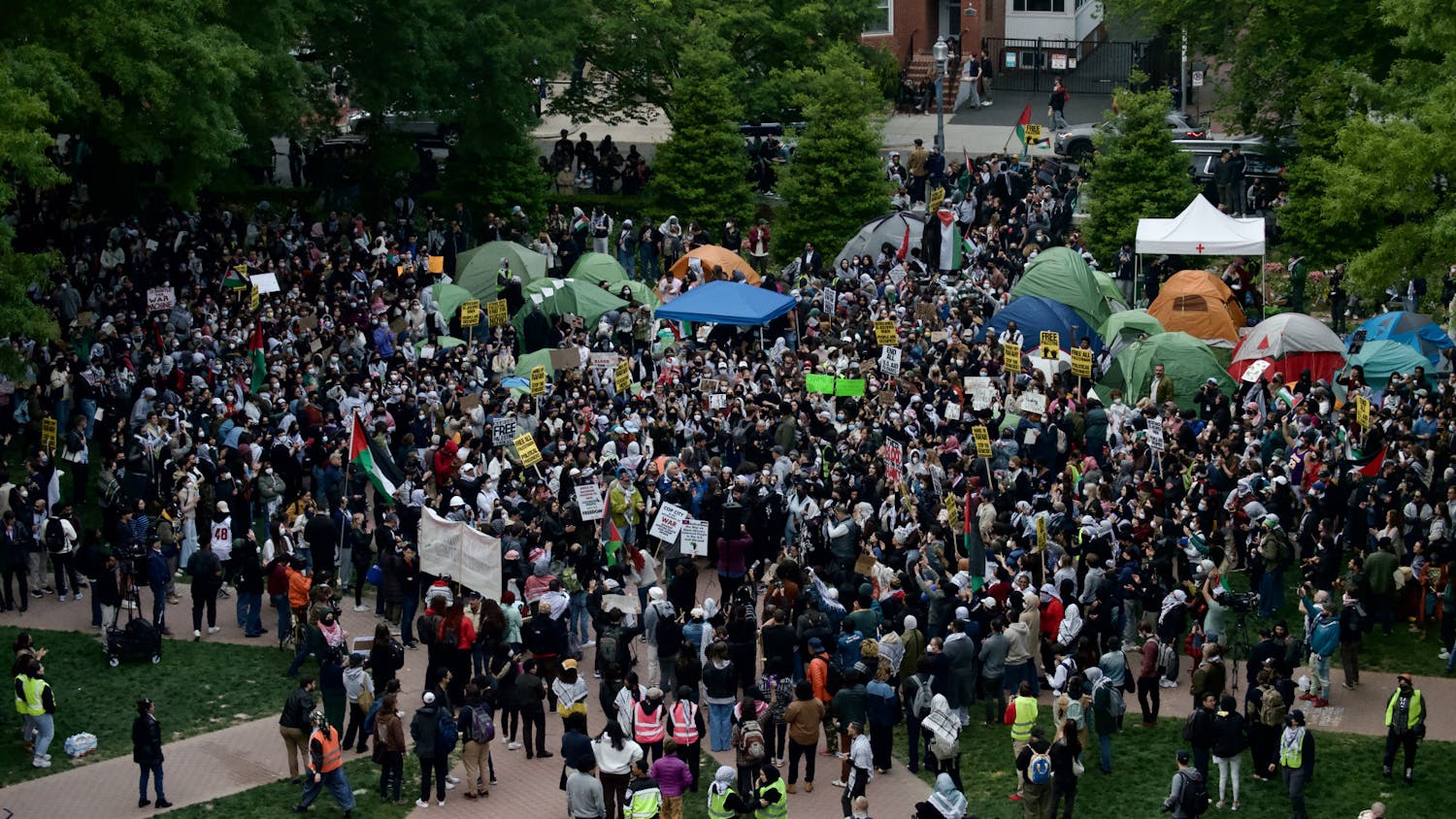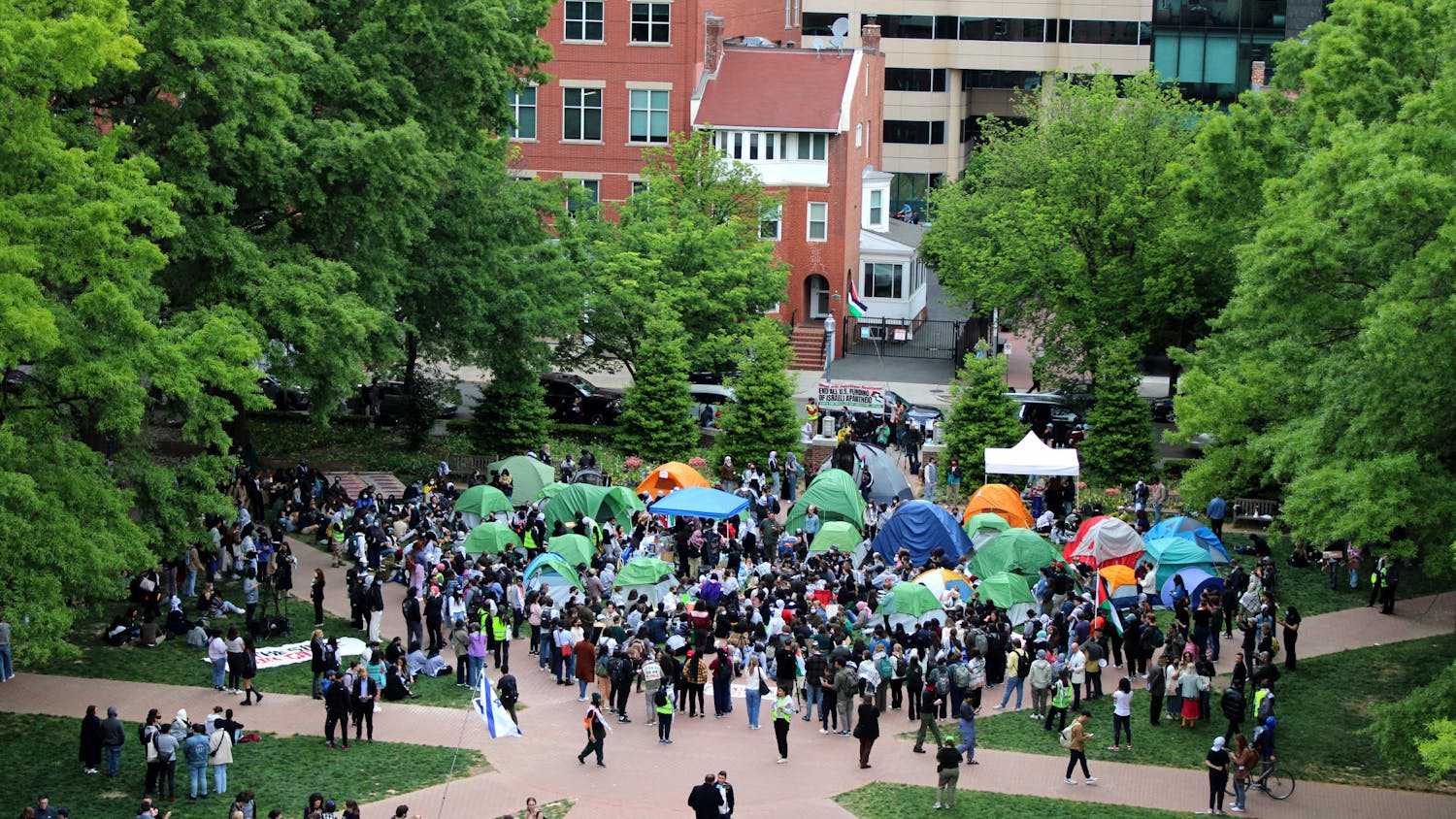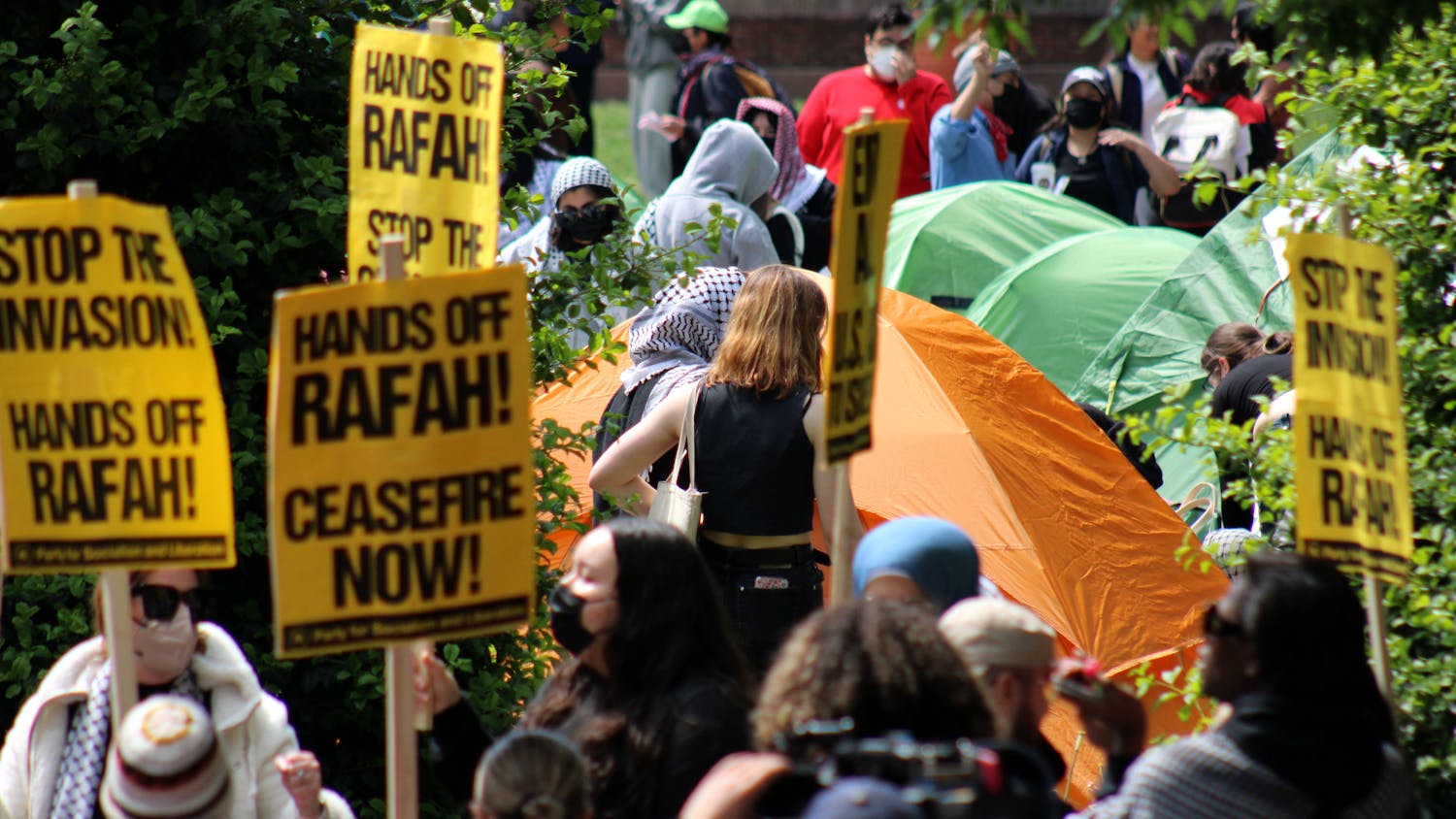The U.S. Army Corps of Engineers found an open glass flask containing traces of the chemical agent mustard two feet below ground at a vacant home behind AU on Aug. 12.
The findings were at 4825 Glenbrook Road, behind AU's Public Safety building.
David Taylor, chief of staff to President Neil Kerwin, said the flask posed no threat to the surrounding area, and the chemical did not seem to have leaked into the surrounding soil.
"It is my understanding that there was no presence of this agent in the soil around where this flask was found," he said.
Clem Gaines, spokesman for the Army Corps of Engineers in Baltimore, said the finding poses no threat to students' safety, but the digging is temporarily halted.
"When we found [the flask] and made the identification, the pit was closed and the work stopped," Gaines said.
It is unclear when the work will continue, he said.
"We're not making any estimate on when we'll be working again," Gaines said. For now, he advises staff and students to avoid the site of the findings.
In 1917, AU was established to be a large-scale chemical warfare research center with laboratories, test sites and other facilities for studying the various chemical, physiological and mechanical aspects of gas warfare. Only two buildings existed at the time -- the College of History building and McKinley College of Government. The Departments of the Army and Navy agreed to spend $175,000 to convert classrooms in AU's McKinley building into laboratories and to hire additional chemists. McKinley became the Experiment Station of "Camp American University," according to an article by the U.S. Army Corps of Engineers.
Mustard gas, phosgene and superpalite were some of the main chemicals studied at AU. After World War I, unexploded munitions, mustard gas, arsine and arsenic from the testing sites were buried near AU's campus, The Eagle previously reported.
Mustard gas, the agent found in the buried glassware, causes blisters, temporary blindness, breathing problems and death, according to a USA Today article.
The 16-year cleanup of munitions buried in D.C.'s Spring Valley neighborhood has cost the Army Corps of Engineers $170 million thus far, according to the Washington Post. There are 1,632 suspect properties in the area, 140 of which have required cleanup already. The Army Corps has sampled 98 percent of the properties, the Post reported.
In the past, the Army Corps worked under a metal kit containment structure. This level of protection included an air filtration system, had the workers wear hazmat suits and had alarm systems that would go off should there be a spill or gaseous hazard, according to Taylor.
This containment structure has not been used in recent years, but Taylor believes the mustard gas find will lead to its reconstruction.
"Our concern now is not to rewrite history," Del. Eleanor Holmes Norton, D- D.C., told the Post, "but to keep the corps digging until all concerned, including the Congress of the United States, is satisfied that it's all done."
"Safety for the workers and for the community is our number one priority as we move through all of this digging and remediation," he said.
This is not the first time findings from the old testing center have been uncovered in the area, but they have mostly been debris, according to Gaines.
"Mostly the material that we're finding is glassware and items that would have been found in the American University experimental station," he said.
The Army Corps have halted their search for chemical warfare remains for now and will continue once it takes the appropriate safety precautions, according to a press release from the Corps.
"The main thing is that this is an ongoing, long, slow process," Taylor said. "But our number one concern is that the work be done with thoroughness and safety in mind."
You can reach this staff writer at nglass@theeagleonline.com.





